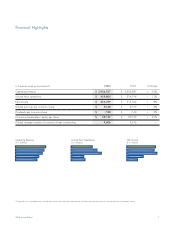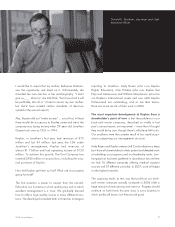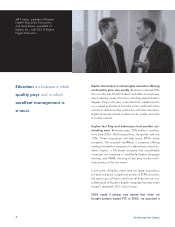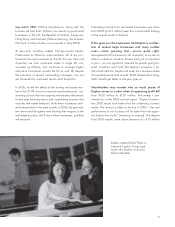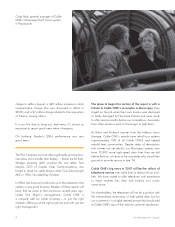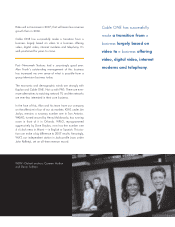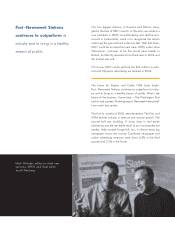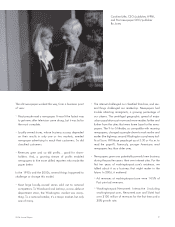Washington Post 2006 Annual Report Download - page 5
Download and view the complete annual report
Please find page 5 of the 2006 Washington Post annual report below. You can navigate through the pages in the report by either clicking on the pages listed below, or by using the keyword search tool below to find specific information within the annual report.
2006 Annual Report 3
Iwould like to report that my mother, Katharine Graham,
saw the opportunity and leapt on it. Unfortunately, she
recorded her own reaction in her autobiography: “I don’t
give a s___ about it,” she told Dick, “but if you think it will
be profitable, let’s do it.” (I hate to censor my own mother,
but she’d have wanted certain standards of decorum
upheld in the annual report.)
Alas, Kaplan did not “make money” … not at first. At least
three would-be successors to Stanley came and went; the
company was losing money when 29-year-old Jonathan
Grayer took over as CEO in 1994.
Kaplan, in Jonathan’s first year, had revenues of $75
million and lost $4 million. Last year, the 13th under
Jonathan’s management, Kaplan had revenues of
almost $1.7 billion and had operating income of $130
million. To achieve this growth, The Post Company has
invested $950 million in acquisitions, including the orig-
inal purchase of Kaplan.
How did Kaplan get here so fast? What are its prospects
going forward?
The first question is easier to answer than the second:
Education is a business in which quality pays and in which
excellent management is a must. We gradually learned
how to offer a high-quality course in many different loca-
tions. We developed complete faith in three top managers
reporting to Jonathan. Andy Rosen (who runs Kaplan
Higher Education), John Polstein (who runs Kaplan Test
Prep and Admissions) and William Macpherson (who has
run Kaplan’s international assets and now adds Kaplan
Professional) are outstanding, and so are their teams.
Here are some results of their work in 2006.
The most important development at Kaplan from a
shareholder’s point of view is that the problems in our
brick-and-mortar campuses, described so vividly in last
year’s annual report, are improved — more than I thought
they would be by now,though there’s still plenty left to do.
Our problems were the complex result of too-rapid acqui-
sitions outgrowing our management structure.
Andy Rosen and Kaplan veteran Jeff Conlon deserve a deep
bow from all shareholders for their patient and detailed work
at rebuilding our programs and our leadership ranks. Low-
hanging fruit has been gathered in abundance (at one time
we had 76 different campuses offering medical assistant
courses and 39 different curricula). In 2007, work will begin
on the higher branches.
The surprising result, to me, was that profits at our brick-
and-mortar campuses actually increased in 2006 while a
large amount of restructuring work went on. Progress should
continue on both fronts this year (ours is not a business in
which profits will boom, but they should grow).
Donald E. Graham, chairman and chief
executive officer



